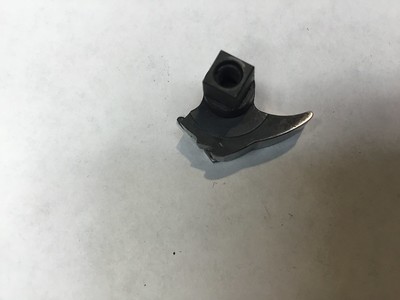This 7 month-old small Siler lock is not engaging at half **** much. It will 'click in' half **** fine several times and then it will roughly skip over the half-**** but engage solidly at full ****. This happens both on and off the gun so I believe it's not a lock mortise issue. Also, I checked the bridle and its not too tight nor loose.
Interestingly, when the lock isn't engaging at half ****, if I give the side plate a good stiff tap, it will thereafter click nicely into half-**** a few more times. (That's why I think it's a bum fly). Same thing when it's off the gun; a good tap on the **** screw head and it will then engage in half-****.
I have it very well lucubrated with clipper oil.
I compared it with another small Siler lock I have and in comparison it looks really crude and obviously unpolished. It's on my Sparrow pistol, so I was wondering if rather than sending it off to be repaired ($$$), maybe I can take the lock apart myself (a first time doing that for me) and just remove the fly. Or, is this lock just trash? (Pics attached)
I'm bummed that I have to do this with a new lock that came from a pretty reputable dealer.
Thanks,
Bob
Interestingly, when the lock isn't engaging at half ****, if I give the side plate a good stiff tap, it will thereafter click nicely into half-**** a few more times. (That's why I think it's a bum fly). Same thing when it's off the gun; a good tap on the **** screw head and it will then engage in half-****.
I have it very well lucubrated with clipper oil.
I compared it with another small Siler lock I have and in comparison it looks really crude and obviously unpolished. It's on my Sparrow pistol, so I was wondering if rather than sending it off to be repaired ($$$), maybe I can take the lock apart myself (a first time doing that for me) and just remove the fly. Or, is this lock just trash? (Pics attached)
I'm bummed that I have to do this with a new lock that came from a pretty reputable dealer.
Thanks,
Bob
Attachments
Last edited:









